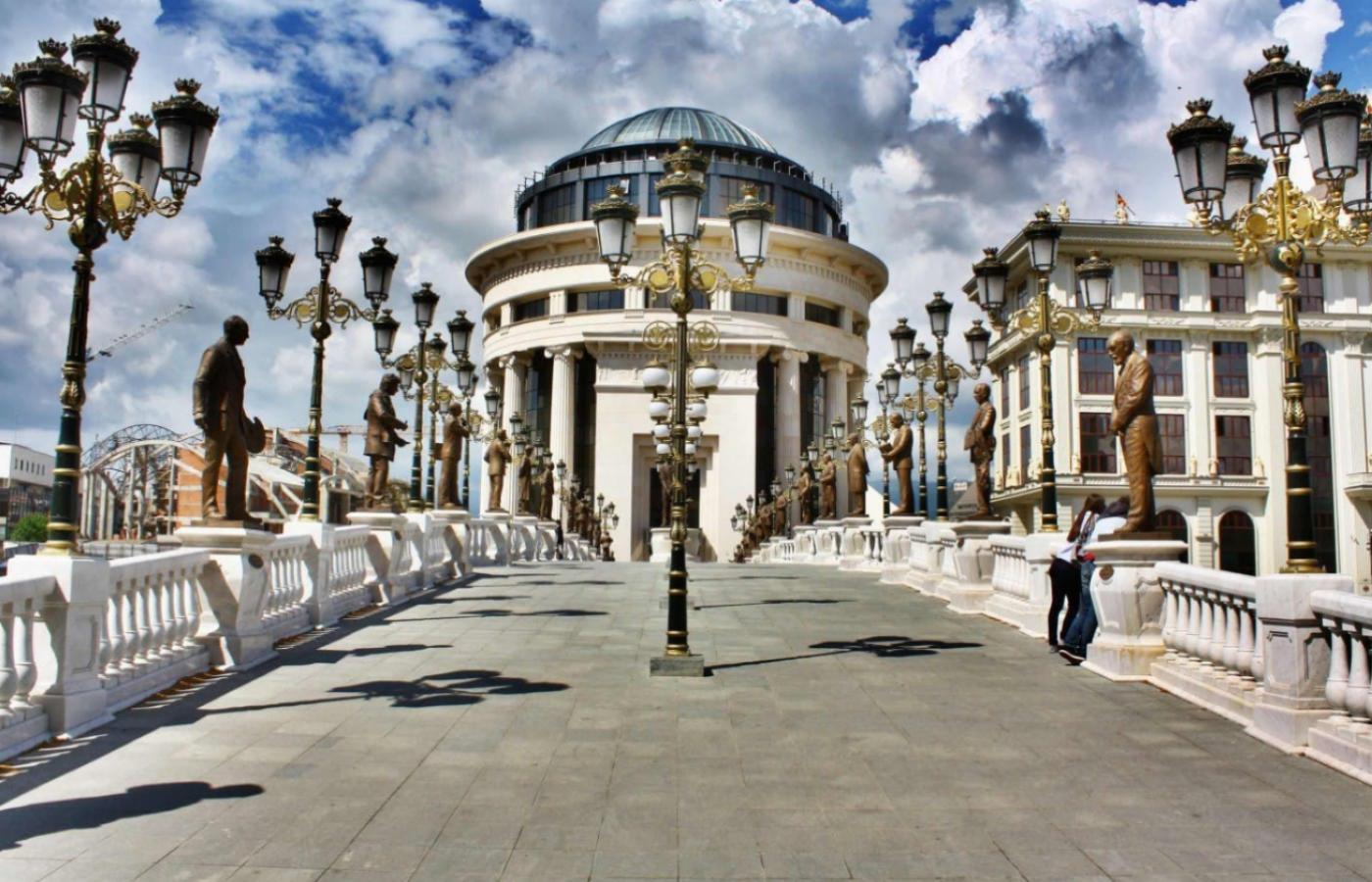
Top 10 attractions in Skopje | What to do in Skopje
Skopje Fortress
Archaeological excavations show that people have been living on the hill above what’s now the Old Bazaar since at least the Bronze Age. A town was first founded here in the early Byzantine era during the 6th and 7th centuries when the huge blocks of stone still visible in the fortress’ walls were dragged here from Scupi, the nearby town that was destroyed during the 518AD earthquake. This was the great town of Justinia Prima, founded by Emperor Justinian I (c.482-565). From the 14th to the 20th century the Ottomans used the fortress as a military barracks, expanding the number of towers to 70 of which only three remain today. The 1963 earthquake flattened much of the fortress, including many of the walls, some of which are currently being rebuilt. Ongoing excavation work over the last decade or so has revealed many fascinating finds including ancient musical instruments and, in 2010, the largest collection of Byzantine-era coins ever discovered in Macedonia. Best visited with the aid of a local tour guide, there’s not much to see these days, although the views on a clear day are quite spectacular.
Stone Bridge
If you stop and think for a minute about how many people from every echelon of society and representing so many diverse cultures have walked over this relatively small bridge connecting Plostad Makedonija with the Old Bazaar since its original construction over 550 years ago you’ll understand why it’s one of the main symbols of the city and why it features on Skopje’s coat of arms. Built on the site of an earlier Roman bridge, the current crossing is made from solid stone blocks and features a total of 12 arches. At 214m from end to end and just 6m wide, the bridge narrowly escaped being blown up by the Nazis in 1944, has been used as an execution site in the past and is often populated with hawkers selling cheap Chinese souvenirs and scruffy Romani kids banging drums for spare change.
Mother Teresa Memorial House
Built on the site of the former Sacred Heart of Jesus Cathedral in which she was baptised and located inside a like contender for the title of the world’s ugliest building, this interesting diversion for some and compulsory pilgrimage for others celebrates the life and work of the Skopje-born Catholic nun and missionary Anjezë Gonxhe Bojaxhiu, better known to the world as Mother Teresa (1910-1997). On two floors and entered through the door at the top of the stairs, inside is a host of Teresa-related memorabilia, personal effects and, on the top floor, a veritable shrine complete with large windows, intricate filigree and a large black and white photograph of the woman herself.
National Archaeology Museum
The Archaeological Museum of Republic of North Macedonia is situated on the left bank of Vardar river, next to Skopje’s landmark the old Stone Bridge. This museum institution is the oldest of its kind in Republic of North Macedonia existing for almost a century. Its permanent exhibition presents over 7000 artifacts of extraordinary historical, cultural, and art values. These artifacts tell stories of the local inhabitants, their material and spiritual cultures from early prehistory to the end of the Ottoman period.
Mustafa Pasha Mosque
Towering above the Old Bazaar and featuring a mighty, 42m minaret, the elegant Mustafa Pasha Mosque was built in 1492 and has somewhat incredibly survived every historical disaster Skopje’s managed to throw at it, and as such looks pretty much the way it did 500 years ago. In the garden is a türbe holding Mustafa Pasha’s earthly remains as well as those of one of his daughters. During the summer the garden fills with sweet-smelling roses and is a great place to sit and relax.
St. Clement of Ohrid Cathedral
Just west of the centre stands Skopje’s modern Orthodox Cathedral building, also known as the Ministry Temple, with Saint Clement of Ohrid as its patron. Built in 1972 by architect Slavko Brezovski and consecrated in 1992, the building consists solely of arches and domes. It has a massive chandelier hanging from a central dome that also features a large Jesus Pantocrator fresco.
Central Park Skopje
Originally laid out at the end of the 19th century, this large public space to the north and northwest of the city is an extremely popular place during the warmer months of the year. Good for walking, cycling or picnicking in. The northern edge of the park runs alongside the river which features a long path popular with the city’s jogging community. Not just a green space, the park contains sports halls and tennis courts, a small stage, bars, restaurants and hotels and also plays host to at least one outdoor nightclub during the summer. In the middle is Skopje Zoo, previously an embarrassment to the city and now with the help of some large international donations is at least trying to make efforts to improve the lives of the beasts who have to live in it.
Matka Canyon
The stunning Matka Canyon is a good reminder of how close the mountains always are in Macedonia. Situated just 15km southwest of the city, the 5,000ha site features a wide range of things to see and do from enjoying a leisurely lunch on the terrace at the Canyon Matka restaurant to going on a boat tour from the neighbouring small harbour. Bursting with wildlife and famous for its caving and rock-climbing, to get there drive west out of the city and take a left onto the P402 that passes through the Albanian village of Saraj on the way. During the weekends and holidays the road is closed some distance from the canyon and it’s quite a long walk past the hydroelectric dam to get there. The area is also populated with several churches and monasteries clinging to both sides of the canyon. At the main site itself is the small St. Andrew’s Church, built in 1389 and worth the small fee to enter for the ancient frescos that lie within.
Millennium Cross
Built to celebrate 2,000 years of Christianity and situated on the highest point on Mount Vodno overlooking the city, the 66m Millennium Cross is rather dull to be honest, although the journey to reach it’s a lot of fun. First you need to take the Millennium Cross double-decker bus from the bus station to the cable car station half way up the mountain at Sredno Vodno. Buses currently depart every 30 minutes between 08:20 and 15:20 and a one-way ticket, costs just 35 den. At Sredno Vodno you’ll find the cable car station, where tickets costs 120 den for the return journey. At the Millenium Cross itself there’s little to keep visitors hanging around beyond the spectacular view on a good day. The café underneath is a good spot for a cup of coffee or an ice cream, which can be consumed on the outdoor terrace in good weather. At night the Millennium Cross is brightly lit and actually a rather beautiful sight.
Museum of Illusions
To experience just how much your eyes and brain can be deceived, go check out the fascinating and informative Museum of Illusions. Best enjoyed by groups so you can see each other be transformed, take the family, friends or colleagues for a fun-packed hour or two exploring its three floors of optical illusions and mind-bending installations. There’s also a projection room where you can try your hand at one of their mind-bending puzzles.





